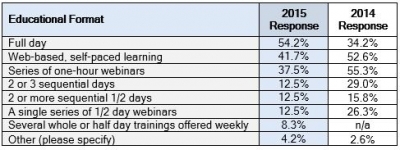 Framing information and using the Iron Triangle – time, cost and scope – can be instrumental in gaining support from senior executives for your projects.
Framing information and using the Iron Triangle – time, cost and scope – can be instrumental in gaining support from senior executives for your projects.In their 2002 book, “Selling Project Management to Senior Executives: Framing The Moves That Matter,” authors Janice Thomas, Ph.D., Connie Delisle, Ph.D., and Kam Jugdev, Ph.D., highlight the challenges that project managers face when trying to sell a plan to senior management. The primary issue lies in communicating the benefits of the assignment and approaching the situation with the right frame.
“Framing” is the perspective we bring to decision-making based on past experiences. In her renowned book on the subject, “The Power of Framing: Creating the Language of Leadership,” Gail Fairhurst, Ph.D., says that when we are communicating through frames, we are shaping the reality of a situation.
But framing can have a negative effect when it’s not used with careful thought, so it’s important to choose the proper frame when promoting a project to upper management. By presenting the vital information in a concrete and practical way, project managers can use the Iron Triangle of time, cost and scope to prove to executives how the company will improve its bottom line.
Breaking Through Their Barriers
From CEOs to CFOs, top-level executives are concerned with maintaining profitability. Therefore, they are often wary of using valuable resources like time and workflow in projects that have a potential for failure. When it comes to pitching assignments to them, executives need to understand the positive outcomes that project management will provide the business.
In their book, Thomas, Delisle and Jugdev explain that project management is becoming increasingly important to organizations that are looking to grow within their sectors. Project managers have to present the main components of the project in the right context while managing the realistic expectations of their executives.
The steps of persuasion
When framing a project management pitch for senior leadership, persuasion is an effective tool. In “The Necessary Art of Persuasion,” author Jay Conger, D.B.A., senior research scientist at the University of Southern California’s Center for Effective Organizations, underscored the efficacy of persuasion and discussed four distinct steps that project managers should use for framing discussions with upper management:
- Establish credibility
- Identify common ground and use it to frame goals
- Reinforce position with language and evidence
- Connect emotionally.
 Did you know that we make about 35,000 decisions a day? Learn about the many factors, conscious and sub-conscious, that affect our choices, and how we can control the ones that will help us make the best decisions.
Did you know that we make about 35,000 decisions a day? Learn about the many factors, conscious and sub-conscious, that affect our choices, and how we can control the ones that will help us make the best decisions. Our project management courses have been updated to align with the 6th edition of the Project Management Body of Knowledge (PMBOK®) guide. Every course description in the catalog includes a listing of the number of credits by organization. See inset for example of accreditations per course.
Our project management courses have been updated to align with the 6th edition of the Project Management Body of Knowledge (PMBOK®) guide. Every course description in the catalog includes a listing of the number of credits by organization. See inset for example of accreditations per course.
 As the image to the left illustrates, participatory learning, especially using simulation for practice, provides the highest level of retention for training, second only to “teaching others.”
As the image to the left illustrates, participatory learning, especially using simulation for practice, provides the highest level of retention for training, second only to “teaching others.”
 Studies show that lack of EQ may limit a person’s ability to achieve results. Lower EQ scores correlate with lower merit pay increases, lower job satisfaction and more burnout. Managers’ and supervisors’ EQ scores correlate with their performance ratings.
Studies show that lack of EQ may limit a person’s ability to achieve results. Lower EQ scores correlate with lower merit pay increases, lower job satisfaction and more burnout. Managers’ and supervisors’ EQ scores correlate with their performance ratings. We all have specific words or phrases that are steeped in emotion. During the 1960s and 70s, the term “nuclear power” raised a great deal of emotion—both positive and negative. Similarly today we have emotionally charged words or phrases such as “gun control”, terrorism, and consumer privacy. It is important to recognize one’s own emotionally charged phrases and stop the emotional hijacking that is about to take place.
We all have specific words or phrases that are steeped in emotion. During the 1960s and 70s, the term “nuclear power” raised a great deal of emotion—both positive and negative. Similarly today we have emotionally charged words or phrases such as “gun control”, terrorism, and consumer privacy. It is important to recognize one’s own emotionally charged phrases and stop the emotional hijacking that is about to take place.

 The basis for choosing a course and provider were measured differently last year, but in both instances, the primary driver is the course topic and/or area that most needs development, followed by convenience of timing, and location. The program cost was lower in priority. See Q3 chart on the left for details.
The basis for choosing a course and provider were measured differently last year, but in both instances, the primary driver is the course topic and/or area that most needs development, followed by convenience of timing, and location. The program cost was lower in priority. See Q3 chart on the left for details. The CrossFit program was developed to enhance an individual’s competency at all physical tasks. Athletes are trained to perform at multiple, diverse, and randomized physical challenges. This type of fitness is demanded of military and police personnel, firefighters, and many sports requiring overall physical prowess.
The CrossFit program was developed to enhance an individual’s competency at all physical tasks. Athletes are trained to perform at multiple, diverse, and randomized physical challenges. This type of fitness is demanded of military and police personnel, firefighters, and many sports requiring overall physical prowess. How can crossfit training your mind benefit you in your workplace? Cross-functional training has many benefits for organizations as well as employees. At an organizational level, cross training skillsets help safeguard the organization against widening skills gaps. Organizations that cross-train employees across a range of functions put themselves in a good position to prevent sudden shortfalls and manage surges in specific areas when there is a spike in demand. On an individual level, cross training enables employees to explore and assess alternative interests and abilities. It also enables managers to identify and nurture employees who show exceptional talent in a particular function. Cross-training yourself to learn new skills, can increase your employability and enable you to stay relevant.
How can crossfit training your mind benefit you in your workplace? Cross-functional training has many benefits for organizations as well as employees. At an organizational level, cross training skillsets help safeguard the organization against widening skills gaps. Organizations that cross-train employees across a range of functions put themselves in a good position to prevent sudden shortfalls and manage surges in specific areas when there is a spike in demand. On an individual level, cross training enables employees to explore and assess alternative interests and abilities. It also enables managers to identify and nurture employees who show exceptional talent in a particular function. Cross-training yourself to learn new skills, can increase your employability and enable you to stay relevant. "Business Ethics” is a dangerously murky term with real and profound effects. Ethics are a vital part of every decision, not just hiring practices and the handling of corporate resources.
"Business Ethics” is a dangerously murky term with real and profound effects. Ethics are a vital part of every decision, not just hiring practices and the handling of corporate resources.